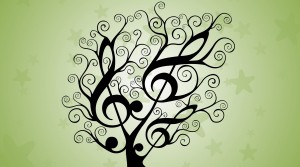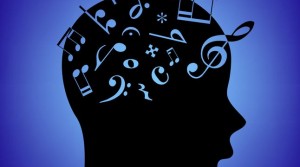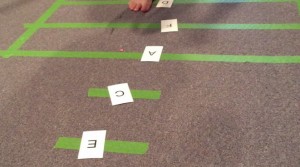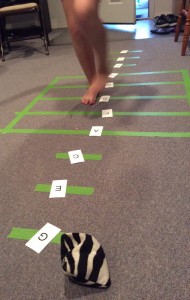In my last post, I mentioned the four types of music memory:
- Kinesthetic Memory, where the fingers “know” what to play;
- Aural Memory, where the performer knows how the piece sounds and can hear the music ahead of the performance;
- Mental Memory: where the performer can reconstruct the work from a mental understanding of the elements of the work;
- Photographic Memory: where through genetic luck or extremely hard work, the performer has a visual image of the sheet music in the imagination.
I try to help my students develop only the first three types of music memory. Developing a photographic memory of a single work requires not only a depth of understanding and musicianship that extends well beyond that of most high school students, it also requires a patience and focus that not even I choose to apply.
Here are some music memory tricks I teach my students:



 To play the game, you need to mark on the floor a staff (grand or 5 line) and any optional ledgers. You’ll also need markers or cards that have diatonic note names written on them.
To play the game, you need to mark on the floor a staff (grand or 5 line) and any optional ledgers. You’ll also need markers or cards that have diatonic note names written on them.